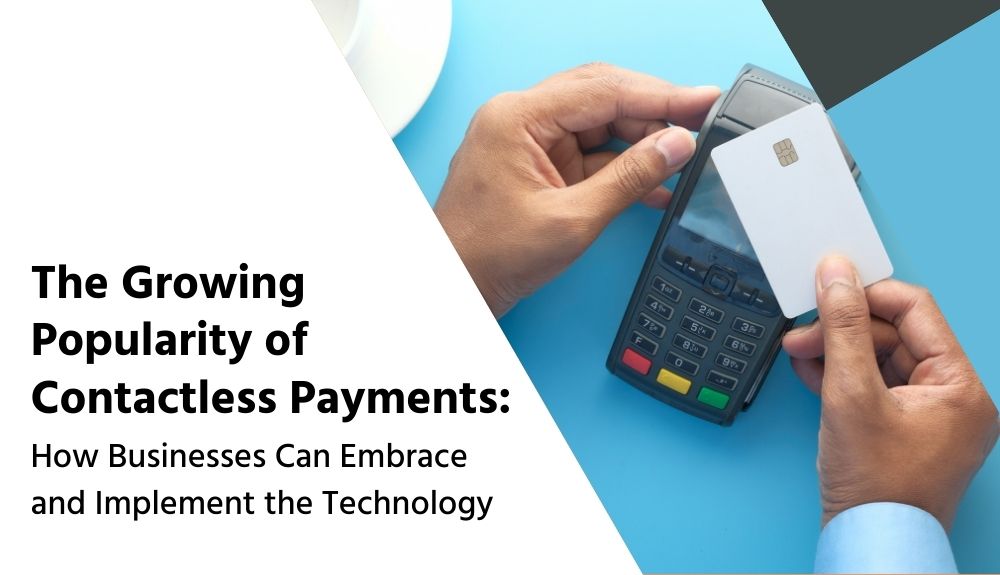
By max February 20, 2024
Introduction to Contactless Payments
Are you tired of fumbling for cash or swiping your card every time you make a purchase? Say hello to the future of payments – contactless technology! With just a tap or wave, businesses and customers alike are embracing the convenience and speed of contactless payments. Let’s dive into how this game-changing innovation is revolutionizing the way we pay, and how businesses can seamlessly integrate it into their operations.
Benefits of Contactless Payments for Businesses
Contactless payments offer a multitude of benefits for businesses in today’s fast-paced world. They provide a convenient and efficient payment method that helps streamline transactions for both customers and merchants. With contactless technology, customers can simply tap their card or phone on the terminal to complete a purchase swiftly, reducing wait times at checkout.
Additionally, contactless payments enhance security by utilizing encryption and tokenization to protect sensitive payment information. This reduces the risk of fraud compared to traditional magnetic stripe cards. Businesses can also benefit from increased customer satisfaction as these quick and seamless transactions lead to improved overall shopping experiences.
Moreover, embracing contactless payments enables businesses to stay competitive in an increasingly digital marketplace. By offering this modern payment option, companies demonstrate their commitment to innovation and meeting consumer preferences. Integrating contactless payments into business operations can lead to improved efficiency, enhanced security measures, heightened customer satisfaction levels, and ultimately help drive growth and success in today’s evolving business landscape.
Challenges and Concerns with Contactless Payments

As businesses increasingly adopt contactless payment technology, there are some challenges and concerns that come with it. One of the main worries is security – customers may fear their personal and financial information being compromised during transactions. This highlights the importance of implementing robust security measures to protect sensitive data.
Another challenge is the need for businesses to upgrade their existing infrastructure to support contactless payments. This can be a significant investment in terms of both time and money, but it’s necessary to meet consumer demands. Additionally, some customers might still prefer traditional payment methods or face difficulties using contactless options due to technological barriers.
Moreover, there could be issues related to compatibility between different devices and systems when processing contactless payments. Businesses must ensure seamless integration across various platforms to provide a convenient experience for all users. Addressing these challenges will be crucial in successfully embracing contactless payment technology in the future.
Steps for Businesses to Implement Contactless Payment Technology
Embracing contactless payment technology can be a game-changer for businesses looking to streamline their transactions and enhance customer experience. When implementing this innovative solution, the first step is to assess your current infrastructure and determine the best approach for integration.
Next, it’s crucial to choose a reliable payment processor that offers contactless capabilities and provides robust security measures to safeguard sensitive data. Training your staff on how to use the new system effectively is essential in ensuring a smooth transition.
Updating your POS systems and terminals to accept contactless payments is another key step in embracing this cutting-edge technology. Communicating the availability of contactless payments to customers through signage and marketing efforts can help drive adoption and increase transaction volume.
Regularly monitoring performance metrics and soliciting feedback from both employees and customers will allow you to fine-tune your implementation strategy for optimal results. By following these steps diligently, businesses can successfully integrate contactless payment technology into their operations seamlessly.
Best Practices for Ensuring a Smooth Transition to Contactless Payments
Transitioning to contactless payments can be a game-changer for businesses. To ensure a smooth adoption, it’s vital to educate your staff on the new technology. Training sessions can help them understand how contactless payments work and how to assist customers effectively.
Updating your POS systems is key. Make sure they are equipped with contactless payment capabilities and that all necessary software updates have been installed. This will streamline transactions and provide a seamless experience for both customers and employees.
Communicate the transition to your customers through various channels like social media, signage in-store, or email newsletters. Let them know about the added convenience of using contactless payments at your establishment.
Testing the new system before fully implementing it is crucial. Conduct trial runs with sample transactions to identify any potential issues or glitches that need resolving before going live.
By following these best practices, businesses can smoothly transition to contactless payments and stay ahead in today’s rapidly evolving digital landscape.
The Future of Contactless Payments and its Impact on Businesses

As technology continues to evolve, the future of contactless payments looks promising for businesses. With consumers increasingly adopting this convenient and secure payment method, companies must stay ahead of the curve to meet customer expectations.
Businesses that embrace contactless payments can benefit from increased transaction speed and efficiency. This not only improves customer satisfaction but also streamlines operations for merchants.
Innovations in contactless payment technology, such as wearables and mobile wallets, provide businesses with new opportunities to engage with customers. By offering diverse payment options, companies can cater to a wider audience and enhance their overall shopping experience.
Furthermore, the shift towards a cashless society underscores the importance of businesses adapting to digital payment methods. Embracing contactless payments not only future-proofs operations but also positions companies as tech-savvy and customer-centric in an ever-evolving marketplace.
The impact of contactless payments on businesses will continue to shape consumer preferences and drive innovation in the financial industry. As this trend accelerates, businesses that are quick to adapt will undoubtedly reap the benefits of staying competitive in a rapidly changing landscape.
Conclusion
Contactless payments are rapidly becoming the preferred method of transaction for businesses and consumers alike. The convenience, speed, and security offered by this technology make it a valuable tool for businesses looking to enhance customer experience and streamline operations. By embracing contactless payment technology and implementing it effectively, businesses can stay ahead of the curve in today’s fast-paced digital economy. As the trend towards cashless transactions continues to grow, adapting to contactless payments will not only meet customer expectations but also future-proof your business for success in the evolving landscape of commerce.
